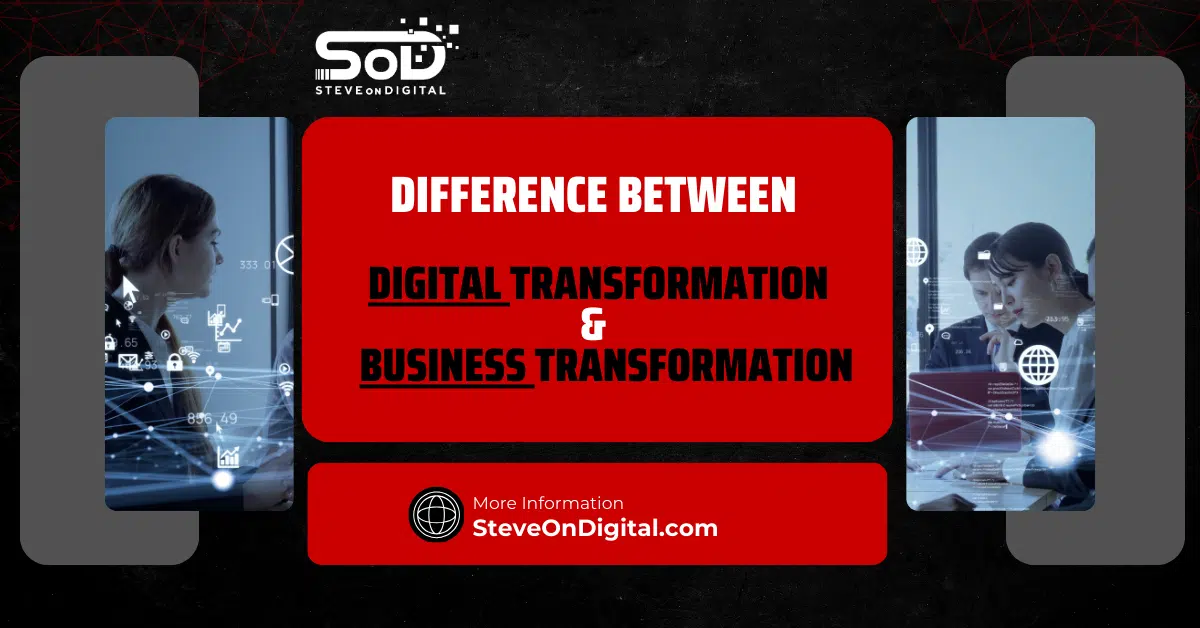Cross-functional teams unite individuals from various departments to work together towards common objectives. These teams enhance innovation, problem-solving, and decision-making by leveraging diverse expertise. In today’s modern business environment, cross-functional collaboration is essential for maintaining a competitive edge.
Cross-functional teams break down silos, fostering better communication and integrated efforts. With the rise of digital transformation, 83% of digitally maturing companies use these teams to drive success and efficiency. They enable faster problem-solving, improved collaboration, and increased innovation, making them vital for any organization aiming to thrive in a complex business landscape.
I’m Steve, a digital transformation expert with a strong background in electrical engineering, an MBA, and a master’s in Project Management. I excel at helping SMEs navigate the digital landscape with practical insights. Let’s begin!
What Are Cross-Functional Teams?
A cross-functional team consists of members from various functional areas such as marketing, sales, and product development, working together on a specific project. A prime example is a product development team, like Spotify’s squads, which are autonomous teams responsible for end-to-end product development. Unlike traditional teams that operate within departmental silos, cross-functional teams bring diverse expertise to solve complex problems more efficiently.
Key Characteristics
- Diverse Expertise: Team members bring different skills and perspectives, enhancing problem-solving capabilities.
- Common Goals: The focus is on achieving shared objectives, aligning with overall company goals.
- Enhanced Collaboration: Frequent communication and teamwork across departments break down organizational silos.
| Characteristic | Description |
| Diverse Expertise | Team members bring different skills and perspectives, enhancing problem-solving capabilities. |
| Common Goals | Focus on achieving shared objectives, aligning with overall company goals. |
| Enhanced Collaboration | Frequent communication and teamwork across departments break down organizational silos. |
Importance of Cross-Functional Teams
Cross-functional teams enhance collaboration, leading to better decision-making and innovation. They help dismantle departmental silos, promoting a more integrated approach to achieving business goals by involving the entire team.
Benefits
- Improved Collaboration: Bringing together team members from different departments fosters better communication and understanding.
- Faster Problem-Solving: Diverse perspectives enable quicker identification and resolution of issues.
- Increased Innovation: Combining different skills and knowledge leads to more creative solutions.
Creating A Cross-Functional Team
Creating an effective cross-functional team involves careful planning and clear goal-setting. To create a cross-functional team, it’s crucial to select the right team members, define their roles, and establish effective communication channels.
| Step | Description |
| Select Team Members | Choose individuals with diverse perspectives and expertise relevant to the project’s goals. |
| Define Team Goals | Set clear, achievable goals that align with broader company objectives. |
| Build Effective Communication | Utilize tools and practices to facilitate seamless information sharing and keep everyone aligned. |
Selecting Team Members
Choosing team members from various departments is vital. Look for individuals with diverse perspectives and expertise relevant to the project’s goals. Research indicates that companies utilizing cross-functional teams see a 21% increase in profitability due to better team dynamics and collaboration (AIIR Consulting).
Defining Team Goals
Setting clear, achievable goals is essential for guiding the team’s efforts and measuring success. Align these goals with the broader company objectives to ensure coherence and focus. According to AIIR Consulting, 31% of leaders report that most work within their organizations is done by cross-functional teams, emphasizing the importance of goal alignment (AIIR Consulting).
Building Effective Communication
Effective communication is the backbone of any successful cross-functional team. Utilize tools and practices that facilitate seamless information sharing and keep everyone on the same page.
Leadership in Cross-Functional Teams
The team lead in a cross-functional team is crucial for guiding the group towards achieving its goals. This role requires strong leadership skills to manage a team composed of members from different departments, each bringing their unique expertise and perspectives. A team lead must be adept at fostering collaboration, resolving conflicts, and ensuring effective communication within the team.
Managing a cross-functional team requires a specific set of leadership skills:
- Effective Communication: Clear and concise communication is essential to keep all team members on the same page and ensure that everyone understands their roles and responsibilities.
- Conflict Resolution: The ability to address and resolve conflicts quickly is vital to maintaining a harmonious team environment.
- Decision-Making: Strong decision-making skills are necessary to guide the team through complex projects and ensure that all viewpoints are considered.
- Adaptability: Leaders must be flexible and adaptable, capable of adjusting their leadership style based on the team dynamics and project requirements.
Leadership Styles
Different leadership styles can be effective in managing cross-functional teams. Here are a few that are particularly suitable:
Democratic Leadership
This style involves the team leader facilitating discussions and encouraging team members to contribute to decision-making processes. It fosters a sense of ownership and collaboration among team members.
Transformational Leadership
Transformational leaders inspire and motivate their team by crafting a compelling vision for the future and fostering an environment that promotes innovation and creativity. This style is particularly effective in driving change and fostering a collaborative team culture.
Situational Leadership
Situational leaders adapt their leadership style based on the team’s needs and the project’s requirements. This flexibility allows them to provide the appropriate level of support and guidance depending on the situation.
Adapting leadership style to suit the team’s dynamics involves understanding the strengths and weaknesses of team members and the specific challenges of the project. Leaders should be observant and responsive, adjusting their approach as needed to ensure the team remains focused and motivated.
Decision-Making Processes
Effective decision-making is critical in cross-functional teams. Here are some strategies to consider:
Collaborative Decision-Making
Involving all team members in the decision-making process ensures that diverse perspectives are considered, leading to more balanced and effective solutions.
Consensus Building
Building consensus among team members helps to create a sense of ownership and commitment to the decisions made. This can be achieved through open discussions and ensuring that all voices are heard.
Involving team members in the decision-making process can enhance their engagement and commitment. Creating an environment where team members feel at ease sharing their ideas and opinions is crucial.
Collaboration Tools and Techniques
Various tools and techniques can facilitate cross-functional collaboration, enhancing team efficiency and effectiveness.
| Tool | Description |
| Asana | Helps in organizing tasks, tracking progress, and managing deadlines. |
| Trello | Uses a card-based system to manage projects and tasks visually. |
| Slack | Facilitates real-time messaging and file sharing. |
| Microsoft Teams | Offers chat, video conferencing, and file collaboration. |
| Zoom | Provides robust video conferencing capabilities, essential for remote team collaboration. |
Project Management Tools
Popular project management tools for cross-functional teams include:
- Asana: Helps in organizing tasks, tracking progress, and managing deadlines.
- Trello: Uses a card-based system to manage projects and tasks visually.
- Monday.com: Provides a customizable platform for project management and team collaboration.
These tools offer features such as task assignment, progress tracking, and deadline management, which are essential for coordinating cross-functional projects.
Communication Platforms
Effective communication platforms for cross-functional teams include:
- Slack: Facilitates real-time messaging and file sharing.
- Microsoft Teams: Offers chat, video conferencing, and file collaboration.
- Zoom: Provides robust video conferencing capabilities, which are essential for remote team collaboration.
Using these platforms helps in maintaining clear and consistent communication, ensuring that all team members are aligned.
Challenges of Cross-Functional Teams
Despite their benefits, cross-functional teams can face several challenges. Enhancing collaboration among team members work is crucial as it not only improves engagement but also contributes to a more dynamic and satisfying work atmosphere. Here are some common issues and strategies to overcome them:
Conflict Resolution
Conflicts can arise in cross-functional teams due to differences in perspectives and priorities. Here are some techniques for resolving conflicts:
- Active Listening: Ensuring that all team members feel heard and understood.
- Mediation: Facilitating discussions to find mutually acceptable solutions.
- Clear Communication: Maintaining open and honest communication to prevent misunderstandings.
Managing Diverse Perspectives
Balancing different perspectives and expertise is crucial for leveraging the full potential of a cross-functional team. Here are some strategies:
- Encouraging Open Dialogue: Establishing a space where team members can freely express their ideas and opinions.
- Mutual Respect: Promoting a culture of respect and appreciation for diverse viewpoints.
By implementing these strategies, cross-functional teams can overcome common challenges and achieve their goals effectively.
Case Studies of Successful Cross-Functional Teams
Cross-functional teams have proven to be highly effective across various industries. By bringing together diverse expertise, these teams can tackle complex problems, innovate, and drive success. Here are some notable case studies that highlight the success of cross-functional teams in different sectors.
Technology Sector
One of the most prominent examples of successful cross-functional teams is CarMax, a leading auto retailer. CarMax’s technology organization has effectively dispensed with traditional planning, relying instead on small, cross-functional teams that include a product manager, a lead engineer or developer, and a user experience expert. These teams are empowered to innovate directly with customers and associates, which has led to faster technological advancements and improved customer satisfaction. Shamim Mohammad, the company’s chief information and technology officer, emphasizes the importance of empowering teams to figure out how to achieve their goals rather than prescribing specific methods (Deloitte United States).
Key Takeaways
- Empowerment: Giving teams the freedom to determine how to achieve their goals fosters innovation.
- Diverse Roles: Including essential roles such as product managers and user experience experts ensures that all aspects of a project are covered.
- Direct Experimentation: Allowing teams to experiment directly with customers accelerates learning and improvement.
Healthcare Industry
In the healthcare industry, cross-functional teams have been instrumental in driving advancements. A notable example is a team in a hospital that brought together doctors, nurses, IT specialists, and administrative staff to improve patient care processes. This team focused on reducing the time patients spent in the emergency department. By leveraging diverse expertise, they implemented a new triage system that significantly cut down wait times and improved patient outcomes.
How They Tackled Specific Challenges
- Collaborative Problem-Solving: By involving various departments, the team was able to identify and address bottlenecks in the patient care process.
- Data-Driven Decisions: The team used data analytics to track patient flow and identify areas for improvement.
- Continuous Feedback: Regular feedback from all team members ensured that adjustments could be made quickly and effectively.
Role of Cross-Functional Teams in Product Development
Cross-functional teams are vital in product development, where innovation and speed are critical. A strong cross-functional team is essential for setting clear project goals, identifying necessary roles, and fostering open communication among team members. These teams bring together members from different departments such as engineering, marketing, and design to work on product development from ideation to launch.
- Diverse Perspectives: By combining insights from different fields, cross-functional teams can develop more creative and comprehensive solutions.
- Holistic Approach: These teams consider all aspects of product development, from technical feasibility to market viability, ensuring a well-rounded product.
Stages of Product Development
Cross-functional teams are involved in various stages of product development:
- Ideation: Team members brainstorm and generate ideas, leveraging their diverse backgrounds to spark innovation.
- Design: Designers and engineers collaborate to create prototypes and test functionality.
- Development: Software engineers and product managers work together to build and refine the product.
- Testing: The team conducts rigorous testing to ensure the product meets quality standards.
- Launch: Marketing and sales teams collaborate to develop a go-to-market strategy and launch the product.
Role of Each Team Member at Different Stages
- Product Managers: Oversee the development process and ensure alignment with business goals.
- Engineers: Develop and test the product, ensuring technical feasibility.
- Designers: Create user-friendly designs and prototypes.
- Marketing Team: Develop strategies to promote the product and reach target audiences.
Accelerating Product Development
- Parallel Workstreams: Allowing different team members to work on various aspects of the product simultaneously accelerates development.
- Regular Check-Ins: Frequent meetings help keep the team aligned and address any issues promptly.
- Agile Methodology: Implementing agile practices ensures flexibility and quick adaptation to changes.
Benefits of Reduced Cycle Times
- Faster Time-to-Market: Shortening the development cycle helps bring products to market more quickly.
- Improved Competitiveness: Being able to respond faster to market demands enhances a company’s competitive edge.
Cross-Functional Teams in Marketing
Cross-functional teams enhance marketing efforts by fostering collaboration between the marketing team and other departments. This integration leads to more cohesive and effective marketing strategies.
- Sales: Aligning marketing strategies with sales goals ensures a unified approach to reaching customers.
- Product Development: Collaborating with product teams helps marketers understand product features and benefits, which can be effectively communicated to customers.
Campaign Development
Cross-functional teams play a crucial role in developing marketing campaigns by bringing together creative, technical, and strategic expertise. This holistic approach leads to more innovative and impactful campaigns.
- Integrated Campaigns: Teams that include members from marketing, design, and data analytics can create campaigns that are visually appealing, strategically sound, and data-driven.
- Product Launches: Cross-functional teams can effectively coordinate product launches, ensuring that marketing efforts are aligned with product availability and customer demand.
Market Research
Market research benefits greatly from cross-functional collaboration. Teams composed of members from marketing, data science, and customer service can gather and analyze comprehensive data to inform business decisions.
- Holistic Insights: Diverse team members contribute different viewpoints, leading to more well-rounded and accurate research findings.
- Innovative Approaches: Combining various expertise allows teams to develop innovative research methods and strategies.
By incorporating these strategies and learning from successful case studies, small business owners can leverage cross-functional teams to drive innovation, improve efficiency, and achieve greater success.
Measuring Success in Cross-Functional Teams
Evaluating the success of cross-functional teams involves tracking specific performance indicators that reflect the team’s effectiveness and overall contribution to the organization.
Team Performance Metrics
Several metrics can be used to measure the performance of cross-functional teams:
- Task Completion Rate: This metric tracks the percentage of tasks completed on time. A high task completion rate indicates that the team is working efficiently and meeting deadlines.
- Quality of Outcomes: Measuring the quality of the team’s output can be done through customer feedback, defect rates, and overall satisfaction with the product or service delivered.
- Employee Engagement: Engaged employees are more productive and committed. Surveys and feedback can help gauge the engagement levels within the team.
- Cycle Times: The duration it takes to complete a project from start to finish. Reduced cycle times often indicate improved efficiency and better collaboration within the team.
Tools to Track and Analyze These Metrics
Using the right tools can help in effectively tracking and analyzing these metrics:
- Project Management Software: Tools like Asana, Trello, and Jira can help in tracking task completion rates and project timelines.
- Customer Feedback Platforms: Tools such as SurveyMonkey or Qualtrics can collect and analyze customer satisfaction data.
- Employee Engagement Tools: Platforms like TINYpulse or Officevibe can measure employee engagement through regular surveys and feedback loops.
Feedback Mechanisms
Implementing effective feedback mechanisms is crucial for the continuous improvement of cross-functional teams.
Regular feedback helps identify areas for improvement and fosters a culture of continuous development. Here’s how to implement effective feedback loops:
- Regular Check-ins: Schedule frequent meetings to discuss progress, address issues, and gather feedback from team members.
- 360-Degree Feedback: Encourage team members to provide feedback to each other, promoting a holistic view of performance.
- Anonymous Surveys: Use tools that allow for anonymous feedback to ensure honest and open communication.
Importance of Regular Feedback for Team Growth
Regular feedback is vital for team growth as it helps in:
- Identifying Training Needs: Highlighting areas where team members may need additional training or support.
- Improving Processes: Providing insights into which processes are working well and which need adjustments.
- Boosting Morale: Regular, constructive feedback can enhance team morale and motivation.
Future of Cross-Functional Teams
Cross-functional teams are evolving with the changing business landscape. Here are some trends and directions for the future:
Technological Advancements
New technologies are reshaping how cross-functional teams operate:
- AI and Automation: Tools powered by artificial intelligence can automate routine tasks, allowing team members to focus on more strategic activities.
- Collaborative Software: Advanced collaborative tools are making it easier for teams to communicate and work together, regardless of geographical location.
- Data Analytics: Enhanced data analytics capabilities enable teams to make more informed decisions based on real-time data.
Opportunities and Challenges Posed by These Advancements
While technology offers numerous benefits, it also presents challenges:
- Opportunity: Increased Efficiency – Automation and AI can significantly reduce the time required for certain tasks, boosting overall productivity.
- Challenge: Skills Gap – The rapid advancement of technology may require team members to continuously update their skills to keep pace with new tools and processes.
Organizational Changes
Changes in organizational structure also influence the effectiveness of cross-functional teams.
- Flatter Hierarchies: Many organizations are moving towards flatter structures, which can enhance the agility and responsiveness of cross-functional teams.
- Decentralization: Shifting decision-making power closer to the team level can empower cross-functional teams to act more independently and swiftly.
Preparing for Future Shifts in Team Dynamics
To prepare for these changes, organizations should:
- Invest in Training: Ensure team members are continuously developing new skills to adapt to changing technologies and processes.
- Promote Flexibility: Foster a culture that values adaptability and resilience in the face of change.
- Encourage Innovation: Create an environment where experimentation and innovation are encouraged and supported.
Final Thoughts
Cross-functional teams play a critical role in today’s business environment by bringing together diverse expertise to drive innovation and efficiency. Effective leadership, clear performance metrics, and robust feedback mechanisms are essential for the success of these teams. Looking ahead, technological advancements and organizational changes will continue to shape the future of cross-functional teams.
Cross-functional teams are not just a trend but a fundamental shift in how businesses operate. By embracing these teams, businesses can improve collaboration, foster innovation, and stay competitive in an ever-changing market. As technology and organizational structures evolve, the ability to adapt and leverage the strengths of cross-functional teams will be crucial for long-term success.




